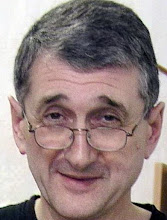
Russia is often considered as actively growing in all Internet-related directions but still lagging behind in social networking - especially at the enterprise level. For example at
COFES-Russia / isicad-2010 some foreign experts talked about this lagging behind as obvious while the Russian attendees supported this discussion by their explanations why total networking is premature for the Russian market.
Recently I ran across
a report of DigitalLife, whose study presented a global data on social networking and characterized Russia as one of the leaders:
... the study showed that online consumers are, on average, spending more time on social networking sites such as Facebook and LinkedIn than on email, despite the former only becoming mainstream in many markets over the last few years. In rapid growth markets such as Latin America, the Middle East and China, the average time spent, per week, on social networking is 5.2 hours compared to only 4 hours on email. Online consumers in mature markets remain more reliant on email, spending 5.1 hours checking their inboxes compared to just 3.8 hours on social networking. The heaviest users of social networking are in Malaysia (9 hours per week), Russia (8.1 hours per week) and Turkey (7.7 hours per week).
Usually I am quite skeptical about statistics in general and in particular about statistics gathered by global organizations in the huge Russian territory. However I trust my own impressions and they correspond to the DL conclusions.
I leave aside considerations about what percent of garbage information is circulating in the Russian Internet, instead I formulate for myself these two questions:
(1) What are the reasons of very high activity in the Russian social networks?
(2) Why social networking is sluggishly used at the Russian enterprise level?
As for the answer to (1), I believe that, ceteris paribus, high networking activity in Russia reflects shortage of other forms of social activity, including political.
There is a popular quote (almost saying) "A poet in Russia is more than just a poet" from a poem (1965) of Evgeny Evtushenko who meant that, when political activity is restricted, a poet can willy-nilly become a public figure with a political flavor. Note that in Russia this likely can be applied to practically all historic periods. Amusingly, in one of his inauguration speeches Putin used this saying as "The President in Russia is more than just a President" :) . Finally, a blogger in Russia is more than just a blogger :).
As for (2), a typical Russian individual (independently of what he or she is pretending to look like) is reflexively skeptical about any official orderliness or even rejects it. With this opinion in mind, I can consider one more question:
(3) Why CAD/PLM user forums independent of vendors are so popular in Russia?
Here are some possible reasons:
- Even the best vendor forums/blogs have some flavor of orderliness,
- There are still a lot of illegal users and they would feel uncomfortable at vendors web sites,
- Independent forums enable any critics making comments regarding any products and their comparison while vendors can hardly permit such discussions...
All main vendors have their Russian blogs, forums, twitters... and are doing their best to intensify communication with their customer communities. Note
rather detailed Russian forums of ASCON and
Autodesk-CIS,
nice blogs of DS Russia and
Autodesk-CIS, etc. However all similar networking vendor's facilities cannot compete with such independent forums like
www.fsapr2000.ru or
www.dwg.ru, which has 30 000 active daily visitors and 4 000 000 monthly views. Roughly speaking, we can distinguish between (a) people's forums that are independent and horizontal, (b) vendor's forums that sometimes can with great talent imitate informality, and (c) imaginary enterprise networking which seems to have some regulatory, formal, orderliness, and vertical features, and for which imitation of informality would be unnatural and hardly acceptable.
These differences, due to the above mentioned cultural reasons, are very pronounced in Russia and remain an obstacle for usage of the up-to-date enterprise networking infrastructures and tools (if enterprise networking is something efficient and demanded). Does this problem exist in the West? Hopefully mature experts of social networking can give me an answer or/and perhaps dispel my possible misunderstanding.



